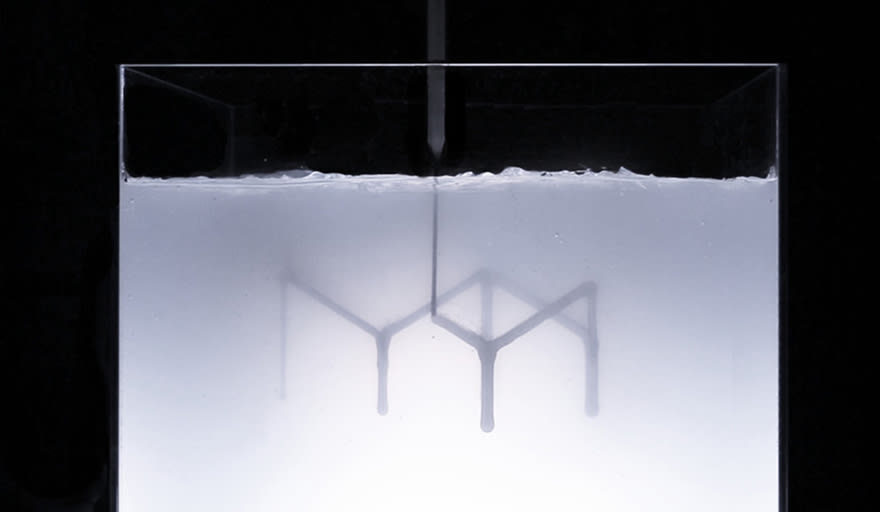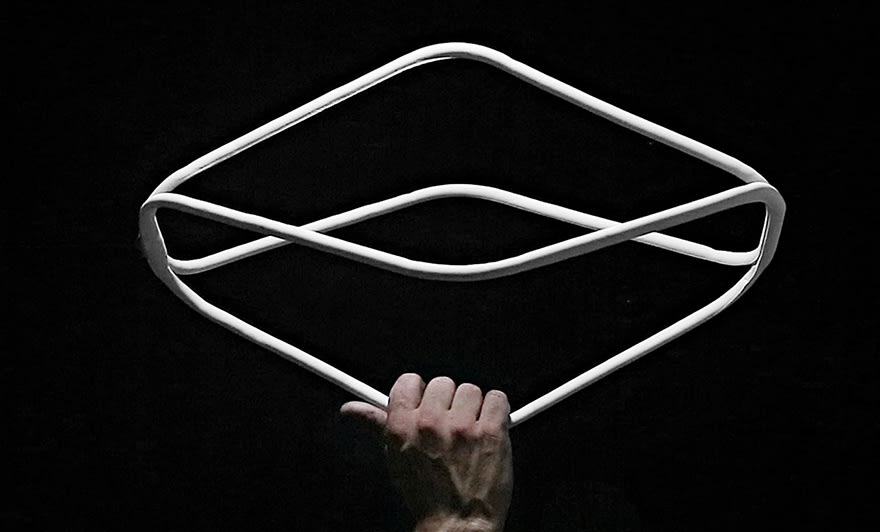Rapid liquid printing is being billed as a faster and stronger alternative to conventional forms of 3D printing for manufacture. Skylar Tibbits, co-director of the Self-Assembly Lab at Massachusetts Institute of Technology, explains the benefits and potential applications for architecture and construction.
What is rapid liquid printing?
An experimental form of manufacturing, developed by MIT in collaboration with US furniture manufacturer Steelcase. The prototype device physically draws objects in 3D space, by extruding a material compound from a computer-controlled nozzle into a stabilising gel. The technique allows for the creation of large-scale freeform objects, such as items of furniture, much faster than conventional 3D printing.
Just how fast is it compared to regular 3D printing for manufacture?
It depends on the object and features you want to print, but in general our process takes seconds-to-minutes rather than minutes-to-hours, with traditional 3D printing. For example, we printed a part that took 10 minutes, compared to 50 hours in a traditional 3DP process.
The use of a quick-setting compound in a stable gel enables printing in single strokes that solidify fast without the impact of gravity. Regular 3D printers build up objects in layers that have to be extruded and fused, resulting in extended print times.
What’s the largest object you have produced and what size is the system capable of?
The largest object we have printed is a coffee table top, a product for Steelcase, inside a metre-diameter tank at a demonstration at the Furniture Fair in Milan.
This printing technique could potentially be used for almost any large-scale printed object, including furniture, products for automotive or aerospace, sports equipment/apparel or other products.
The only real size constraint is the size of the machine and the quantity of gel. It could also be used for smaller printed structures with high-resolution features, although they would likely be slower to print.

What makes it stronger?
Objects are formed of continuous material, rather than a series of layers that typically cause structural weaknesses when printed and fused together. We have printed using regular high quality materials, like plastic, foam and rubber.
What are the limitations of the technology?
The main constraint at the moment is super fine/high-resolution features because we are trading speed/scale for feature size. But in the future we could imagine using multiple nozzles or multiple passes to create small features with high-resolution as well as larger features.
Ultimately, any line or series of lines in 3D space can be printed using this technique.
The objects photographed don’t appear to have flat planar surfaces, is that currently hard to achieve?
The parts we print look like a frozen liquid, they have smooth curves, radiused edges, smooth surfaces etc, because it is essentially a liquid suspended in space and then cured without the forces of gravity or build plates. So far we have tried to harness that design aesthetic, rather than force it to look like other 3DP parts.

What sparked the idea to develop the technology?
We started with the question: how can we print a furniture-scale object in minutes? That resulted in a rethink of how we might print in way that is different from today, ie trying to eliminate the scale constraint, the speed constraint, the material property constraints, and the layer-by-layer approach.
What could be the wider applications for architecture and construction?
This technique is generally applicable to any industry that is looking to print large parts, at high-speeds, using high-quality materials. It may not be suitable for printing buildings, which would require very large tanks of gel, but architectural components with highly customised details could be quite low-hanging fruit.
Could the system be used to hybrid components that incorporate more than one material?
Yes, we could potentially print with various materials, resolutions, nozzles sizes, pressures etc. This is all possible and currently under development.
Is a commercial system planned and when might it become available?
This work was developed over the past six months and we are still in the research phase, we have lots that we want to continue to explore related to materials, speeds, scales, applications and so on.

Objects are formed of continuous material, rather than a series of layers that typically cause structural weaknesses when printed and fused together. We have printed using regular high quality materials, like plastic, foam and rubber.– Skylar Tibbits, Self-Assembly Lab
Comments
Comments are closed.
















“high quality materials, like plastic, foam and rubber”. But are they environmentally friendly or have we lost sight of that goal completely